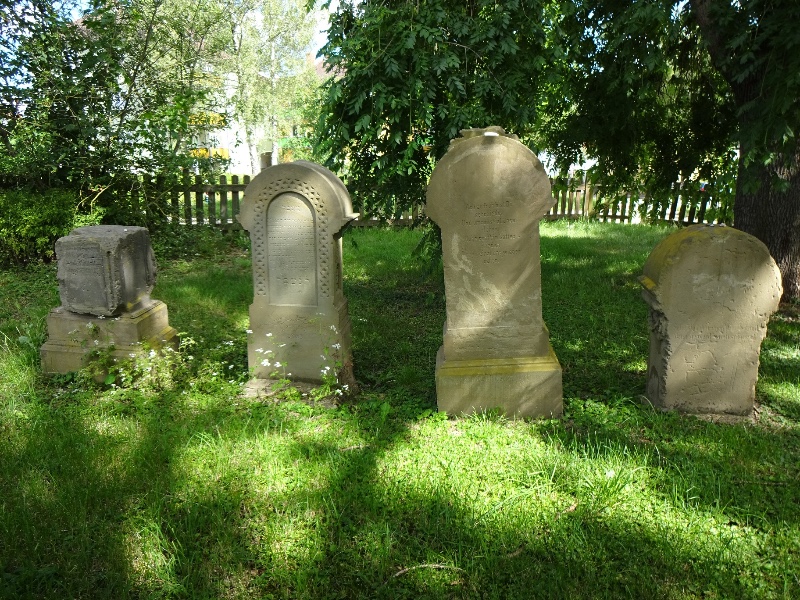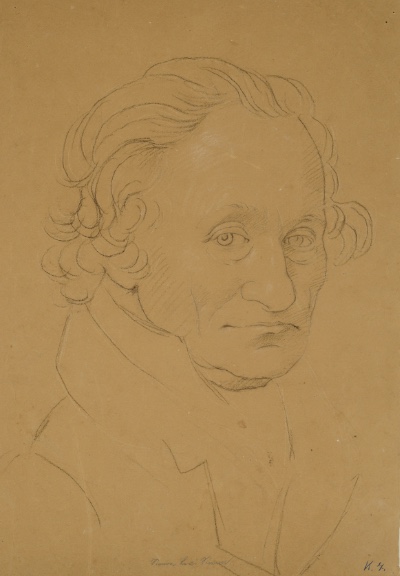
At the beginning of the 19th century two Jewish brothers moved to Coburg. This marked the start of their most extraordinary careers, a financial success story, traces of which can still be seen in the city.
Those men were Joseph and Salomon Simon, two of the numerous sons of Simon Levi Simon, court Jew of the Duke of Hildburghausen. As a court Jew he generated money for the Duke. Since 1801 the Simon family owned a ‘Concession for travelling trade’, which allowed them to do trade in the town of Coburg and the adjacent area, while still being submitted to the ‘Zollverordnung’, the Customs Regulation, and the higher rates it had for ‘Jews on horseback’ and ‘Jews on foot’. They were not permitted to settle in Coburg permanently, however they could rent rooms for their business in the ‘Gasthaus zum Bären’ (‘Bear Inn’, today Spitalgasse 14). Later they moved their business to Spitalgasse 12 next door.
Settle permanently
For centuries, any attempts of Jews to settle permanently were categorically prevented by the Magistrate and the Ducal Adminstration. This also applied to Joseph and Salomon until Simon Levi Simon, their father, approached Duke Franz Friedrich Anton in the year 1805 and pleaded that his two sons be accepted as ‘Protected Jews’. Again, the Administration and the Coburg Magistrate turned it down. Yet, a change of mind had taken place in the Coburg State Ministry and so a century old taboo was broken:
On August 19 Joseph and Salomon Simon were handed a declaration of protection granted by the Duke of Coburg, which meant that they could settle in the city. At first, they still were not allowed to buy any property or land, but before long this limitation was overruled, too. The next big step came for the family, when Joachim Simon, one of the sons of Joseph Simon, was allowed to marry and thereby start a new branch of the Simon family in Coburg.
Own private cemetery
From this point on the Simon family was thriving in the most extraordinary way: The family continued to grow, bought new offices and other property. Herrngasse 4 (today housing the Tourist Information) was the first acquisition after the Simon Brothers had been allowed to rent the house as their accommodation. Once they were given permission to purchase it, they refurbished the house according to their needs and even established their own prayer room. Neither a Jewish school nor a synagogue had existed in Coburg since the Middle Ages and while it was only a prayer room, it served its purpose for religious events and other festivities.
The Simon family were granted the right to establish their own private cemetery long before a Jewish community would be formally established again in Coburg in 1873. The cemetery, the remains of which are still visible (near the crossroads Rodacher Straße and Spittelleite), was situated on the outskirts of the town on the road to Rodach. The exact size of the original cemetery is uncertain, while one source speaks of 1,500 square metres, more recent maps show a cemetery of 782 square metres. The first to be buried in the private cemetery was Joseph Simon in the year 1851. His gravestone has been in situ ever since. It is quite damaged, but with some effort the inscription can still be read today.
Following generations
Over time, the Simon family expanded its business from trading to finance, a new field of activity in Coburg. They became respected and successful businessmen to the extent that several of them earned the title ‘Commerzienrath’, councillor of commerce. One member of the family, Adolph Simon, was elected into the board of the ‘Coburg-Gothaische Creditanstalt’, a renowned bank.
A sign for the Simon family’s independence can be seen in the fact that they did not join the Israelite Cultural Community, established in 1873. They stuck to themselves and did not open their cemetery for burials of the larger Jewish community, keeping it exclusive for family members.
In the course of the next decades, the family expanded their property to more than two dozen buildings, amongst them Spitalgasse 12 (the former WEKA building), Rosengasse 8 (today Feyler’s bakery) or Ketschendorfer Straße 2 (today Villa Victoria). Moreover, the family acted as philanthropes by sponsoring various social causes, e.g. issuing bequests at social events such as weddings or funerals.
Decline of the Simon family
The decline of the Simon family began at the turn of the century. Business slowed down and eventually, they had to file for bankruptcy. Many members of the Simon family left Coburg for other German cities or to go abroad.
The final two burials of a total of 17 on the private cemetery grounds took place in 1902.
During the Nazi rule in Germany the Mayor of Coburg did his utmost to dispossess the remaining property of the family and declare the cemetery grounds the property of the city. The area, which was no longer situated outside the town due to the growth of the city, was supposed to be used for different purposes and was denounced as a ‘Schandfleck’, a disgrace. Even though the dispossession did not happen, the area of the cemetery was reduced and the original stone wall surrounding it was removed as well as many of the gravestones. Allegedly the stones were used for the regulation of the nearby brook.
The six gravestones still visible today are a testimony to the long and extremely successful presence of the Simon family in Coburg. Today the cemetery is Grade 2 listed and is among the very few private Jewish cemeteries still in existence in Germany. In Franconia there is no other place like it.



